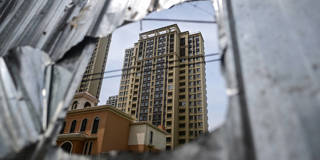OnPoint Subscriber Exclusive
Longer Reads provide in-depth analysis of the ideas and forces shaping politics, economics, international affairs, and more.

A Chinese Bubble Long in the Making
Owing to the one-child policy and the legacies of other less-appreciated Chinese development measures over the years, the stage has long been set for today's property bubble. Even more worryingly, much of China’s economic growth over the past decade has been an overdraft on future growth that now may never materialize.
MADISON, WISCONSIN – China’s property sector is the largest asset class in the world – larger even than the US equity or bond market. But there are growing fears that it is a bubble poised to burst. Already, the heavily indebted Chinese property giant Evergrande has filed for bankruptcy protection in the United States, and the real-estate developer Country Garden is battling a liquidity crisis. The failure of either, or both, could well trigger a financial crisis.